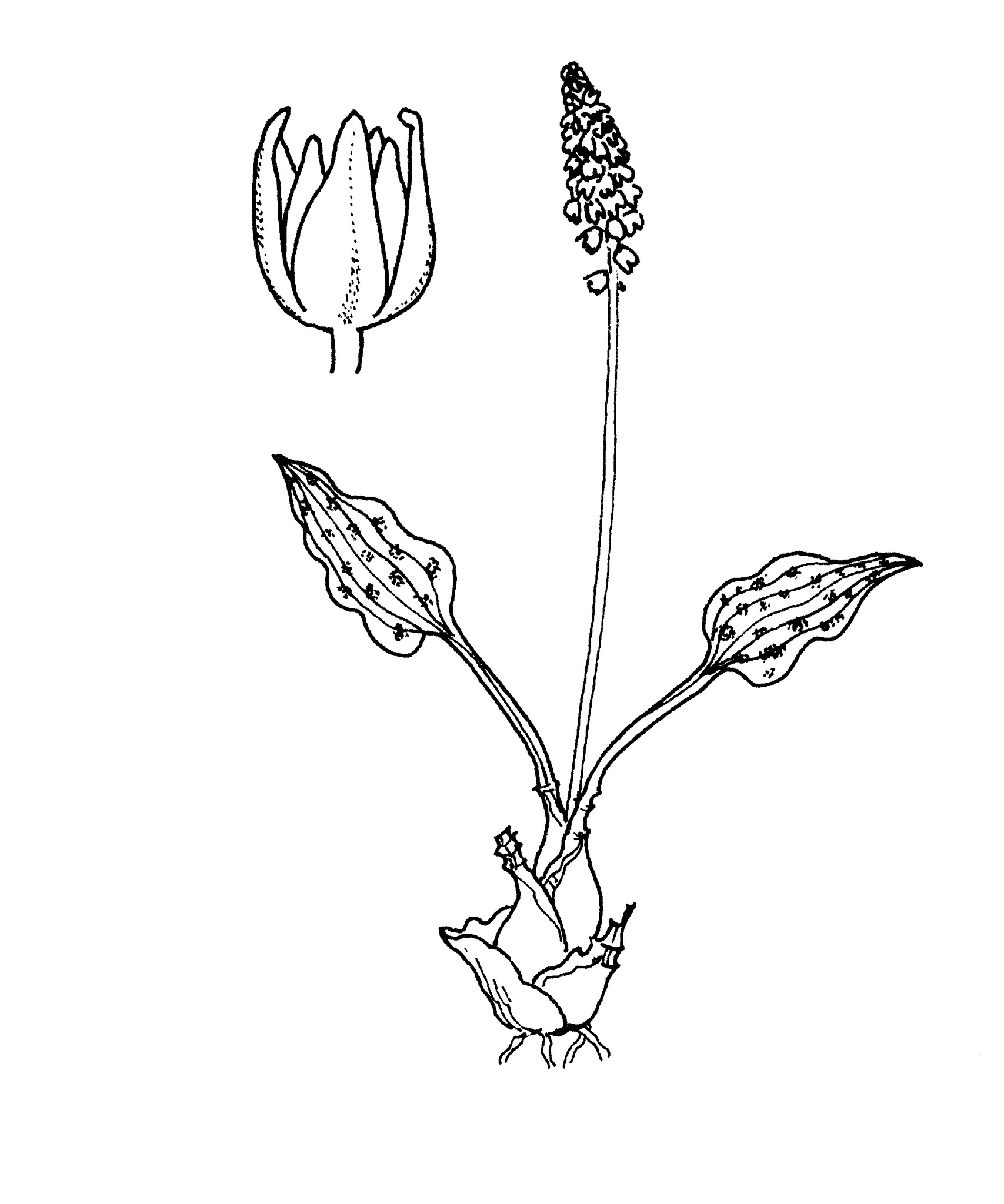
From Drimia and Greek – opsis, referring to the similarity to species of Drimia.
Perennial herbs, bulbs globose, becoming green when exposed; scales fleshy. Leaves basal, 2-4, often spotted, broad, stalked. Scape exceeding leaves. Inflorescence an axillary, many-flowered, spike-like raceme, bracts vestigial, the lower ones with a basal spur. Flowers green-white; perianth segments ascending, shortly united into a tube, tips slightly spreading, hooded, stalks not articulated. Stamens 6, filaments free or shortly united, attached to top of perianth tube. Ovary superior, trilocular. Fruit a capsule, seeds few, round, black.
9 species in southern and tropical Africa.
Seeds, division of bulb clumps.
Bulb with often stalked, spotted leaves and small box-like greenish flowers; floral bracts with a basal spur.
Jessop (1972), Stedje (1994).
Source: (2005). Drimiopsis. In: . Horticultural Flora of South-eastern Australia. Volume 5. Flowering plants. Monocotyledons. The identification of garden and cultivated plants. University of New South Wales Press.
